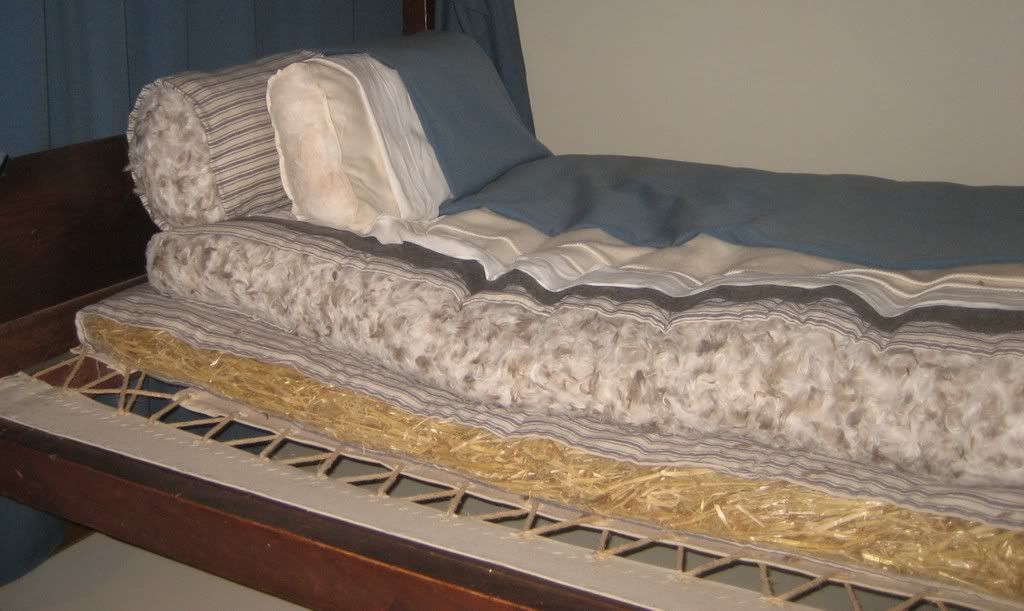Re: Mattress stuffing

Winterthur Museum has this bed with exposed cross sections of each layer. Terre, is this the sack-bottom foundation of which you spoke?
Layers are top to bottom in the following order.

Winterthur Museum has this bed with exposed cross sections of each layer. Terre, is this the sack-bottom foundation of which you spoke?
Layers are top to bottom in the following order.
- wool covering that matches the canopy and draperies
- down in linen or cotton pillow with pillowcase that matches the sheets
- feather in ticking bolster
- wool blankets
- linen or cotton sheets
- wool blanket
- feathers in ticking mattress
- straw stuffed in ticking mattress


Comment